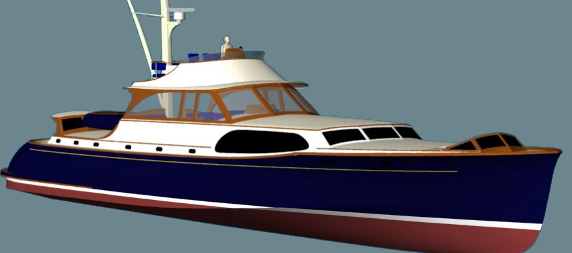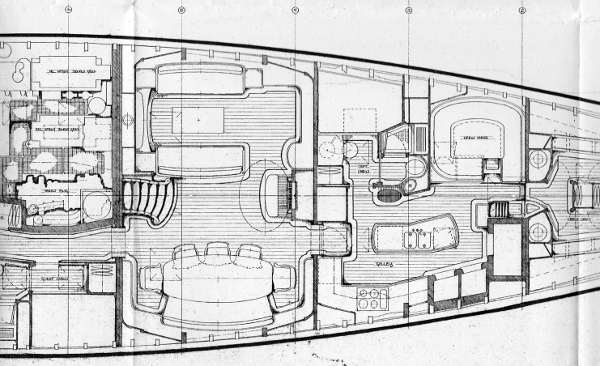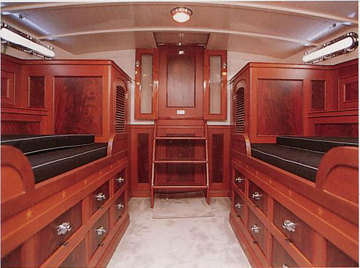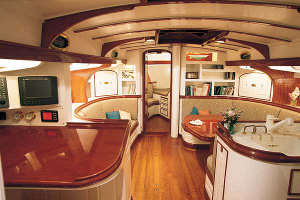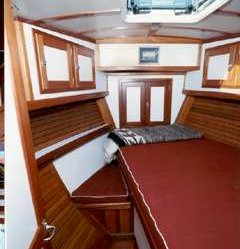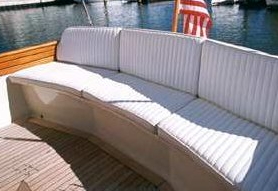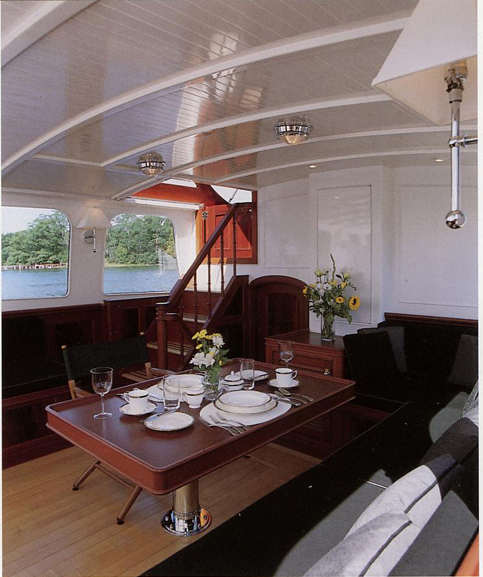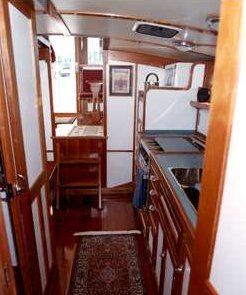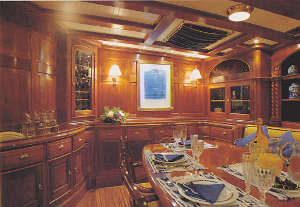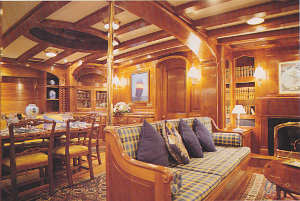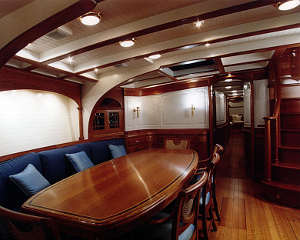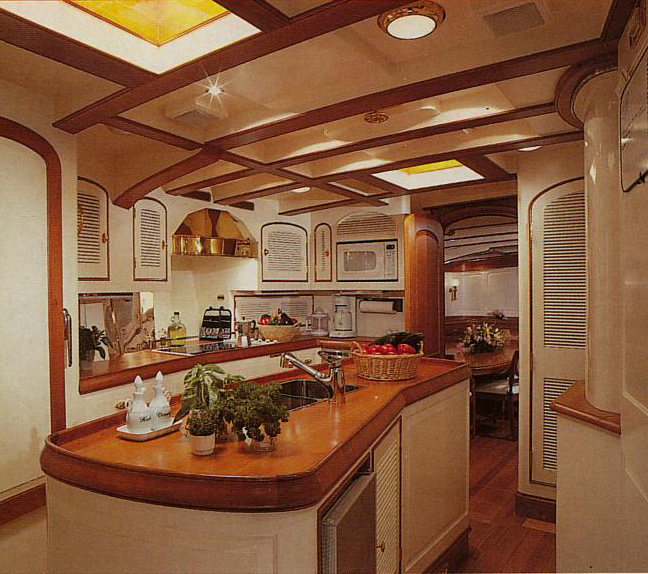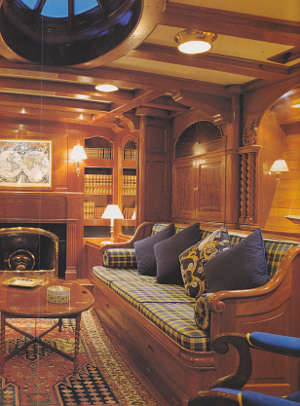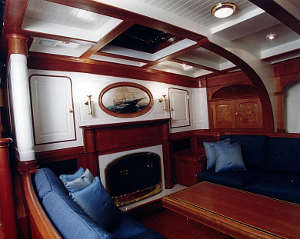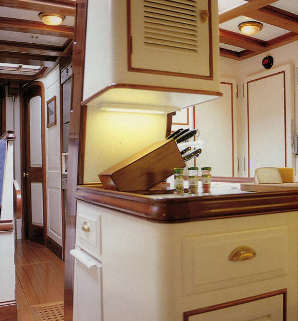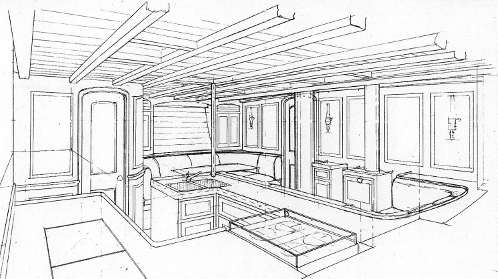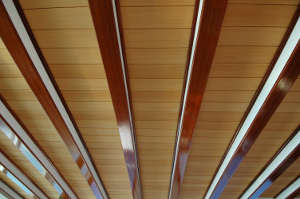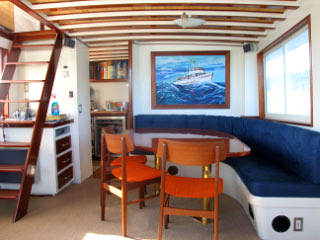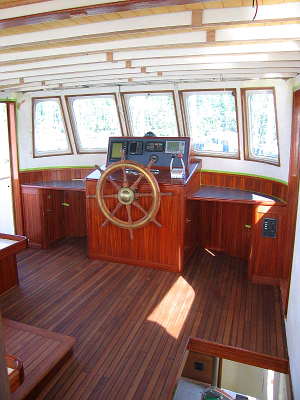Interior Design
 Consulting takes many forms, it may involve getting my opinion on a particular boat or it may include planning or concept sketches and design drawings of a required modification. Most of work falls into these areas:
Consulting takes many forms, it may involve getting my opinion on a particular boat or it may include planning or concept sketches and design drawings of a required modification. Most of work falls into these areas: - Stability Studies,
- Rig and Spar Design,
- Structural Modification,
- Feasibility Study,
- Market Research,
- Interior Design.
2015/09/04: Upcoming Article on Stability for Western Mariner Magazine: I have an upcoming article on stability in Western Mariner magazine.
On Designing Interiors
Like all areas of design, a yacht's interior is a blend of function, style, tradition, and art. Consideration of space planning, ergonomics, traffic flow, and connection of interior and exterior features is key while keeping the entire vessel an integrated design. Beyond the visible surface styling furniture must be buildable and exhibit joinery in sympathy with the rest of the ship.
For many years I was involved with the design of interiors at the highest levels of joinery in a very traditional style. This style uses traditional structure as artistic elements, natural finished woods of various species, wood grain as a styling element, and painted surfaces to offset the showy luxury of natural woods. The use of exposed grain and joints is unusual because it must be executed by skilled joiners or it becomes a mess. Of course this is time consuming and many find it hard to justify. Thus we see interiors made up of stock shop built parts with negative space between cabinets. This to me is not boatbuilding and does not represent high quality work.
Yacht interiors can be anything from simple white painted surfaces to incredibly elaborate exotic wood with hand-rubbed finishes. Commercial boats also vary wildly depending on the owner’s requirements. But certain elements remain no matter the specific detail. Things must be large enough to fit humans, symmetry is good because it seems (in my experience) to make people comfortable, and components must be strong enough to hang together when the boat is out in rough weather. Surfaces must be durable, I have seen numerous lightweight interiors of foam cored veneer panels that are peppered with holes and dents.
I prefer traditional interiors as they will not go out of style, on the other hand this does not appeal to everyone. The modern minimalist style is attractively simple, bright, and airy, but the total lack of handholds and searails seems non functional. I prefer to be reminded that I am aboard a boat and not in a motel room.
I like to see continuity in design, so all fascias and moldings will be scaled versions of a parent. This ties the interior together. I try hard to arrange interiors so that all doors may be left open which provides easy access throughout the ship, and also good ventilation. I like larger, more open spaces rather than a rabbit warren of tiny rooms. Jon Bannenberg taught us about how to open up spaces by opening the en-suite to the stateroom and minimizing passageways.
The galley is one area that often requires more design effort than the entire rest of the interior. This is because it includes (usually) a number of pieces of equipment which must be arranged in a functional and attractive manner. There is always a priority fight for sole space, counter area, and storage volume.
Perhaps the most important effort a designer can make is in tying interior and exterior features together. There should be no surprises when one enters a door or hatchway. The interior should be a logical extension of the exterior. Thus hatches or windows on deck fit in the interior spaces, as do structural elements. Too often I see motoryacht designs with great slashing teardrop windows that are very impressive from the outside. But inside these windows are covered by seemingly unrelated cabinetry. This is the result of different people working on interior and exterior design.
